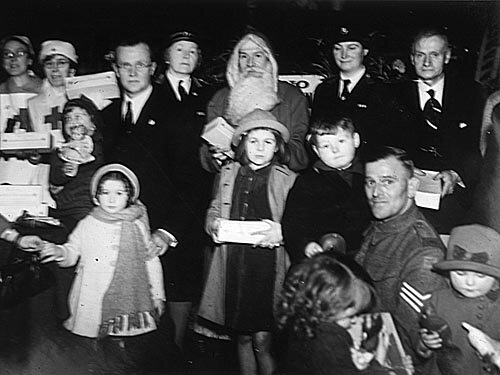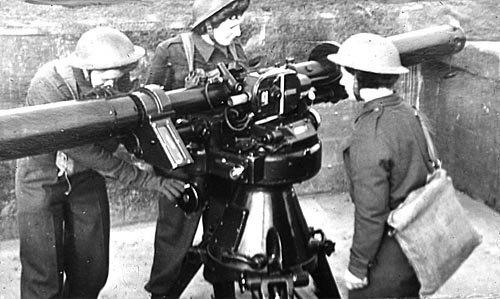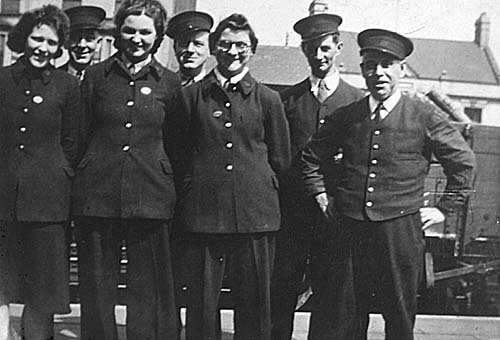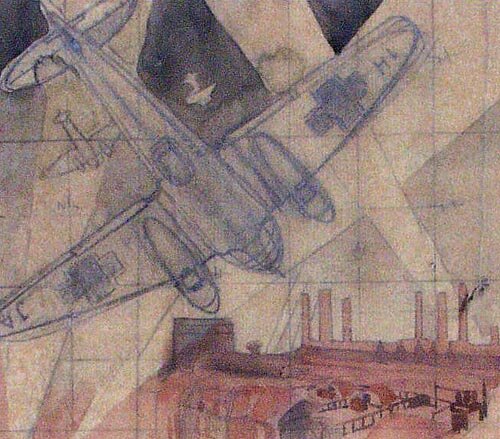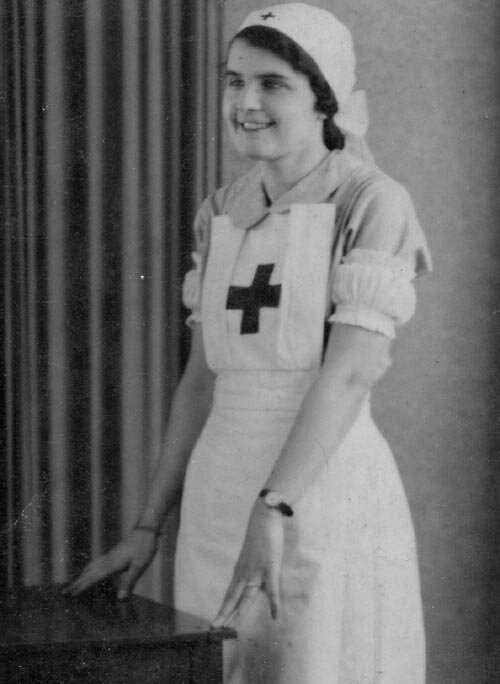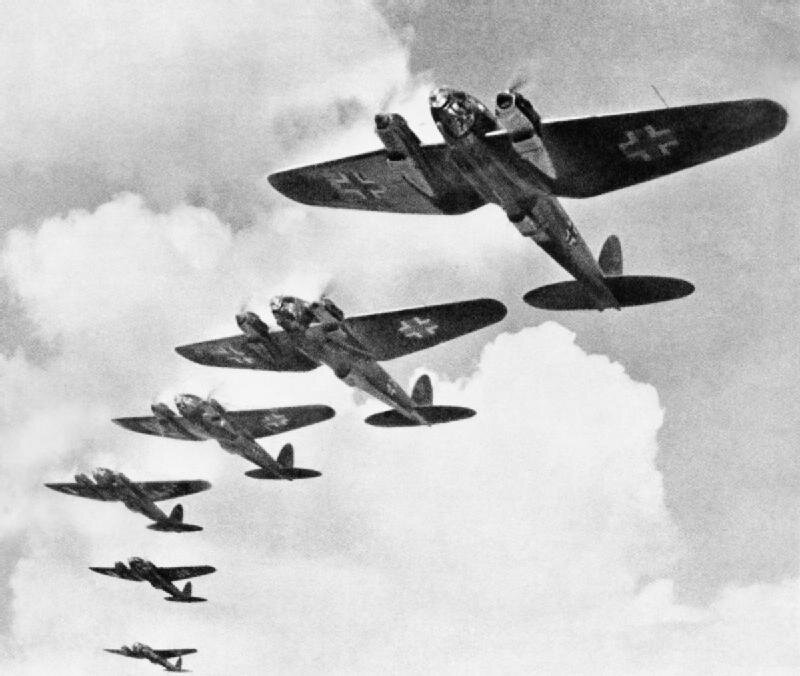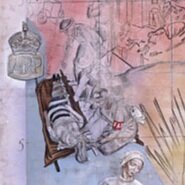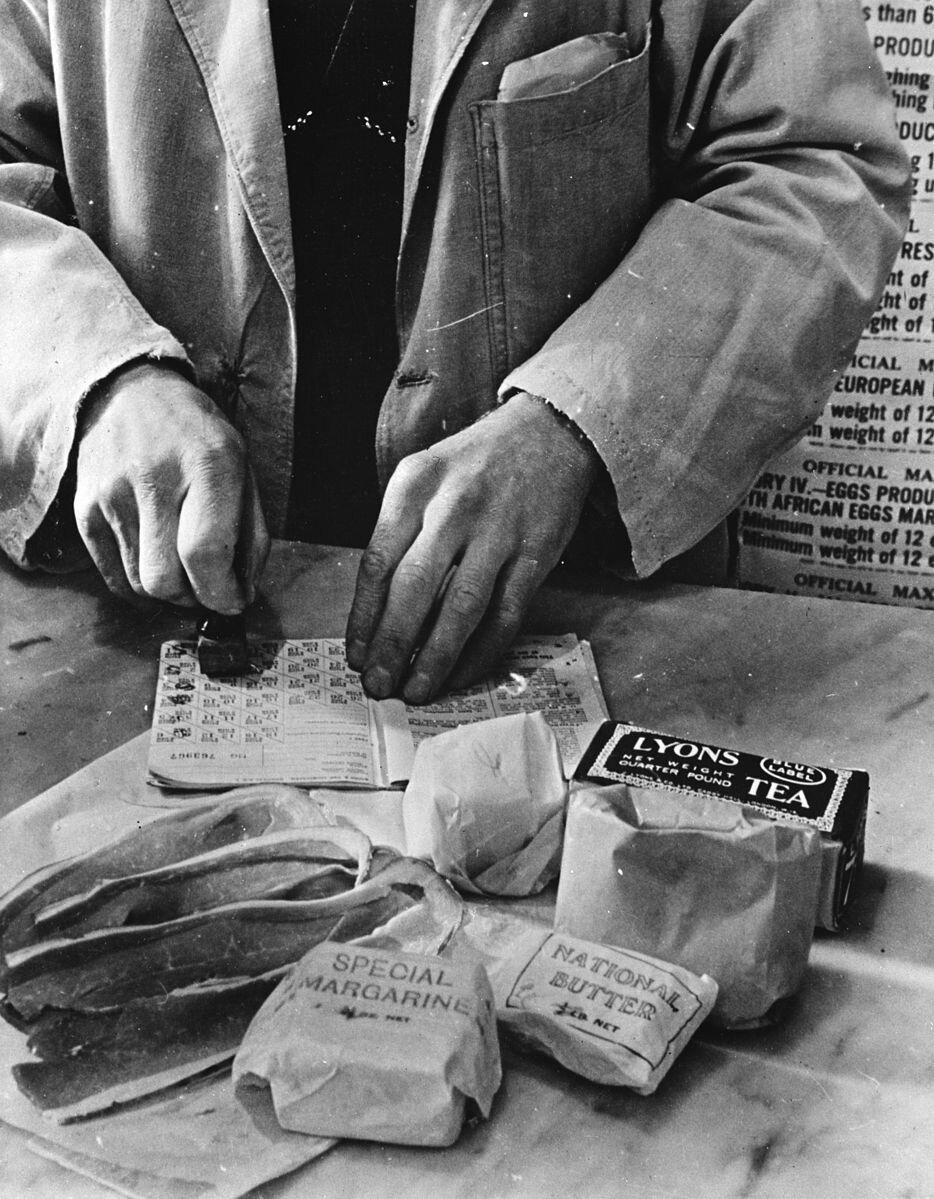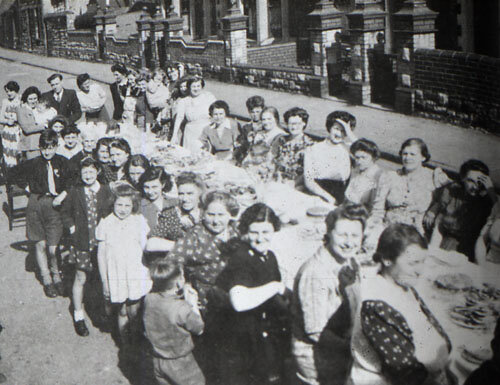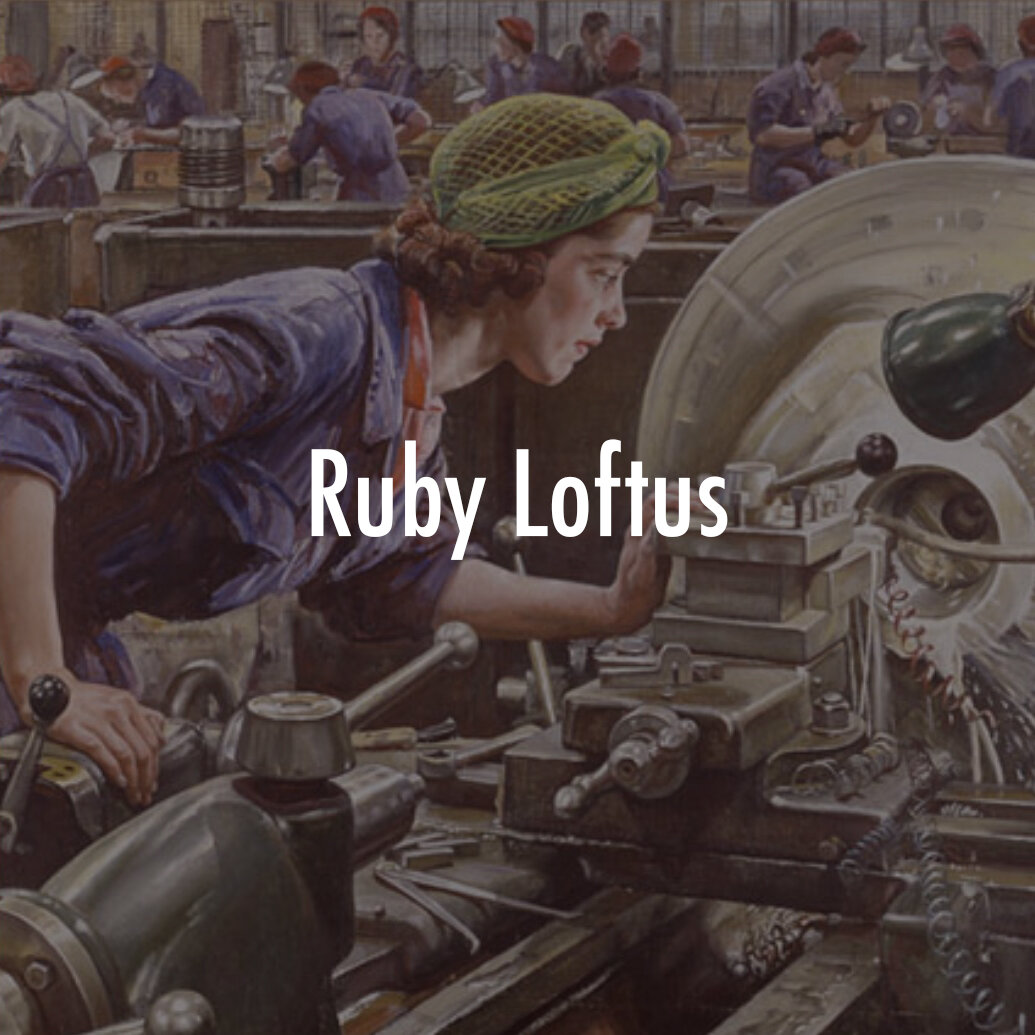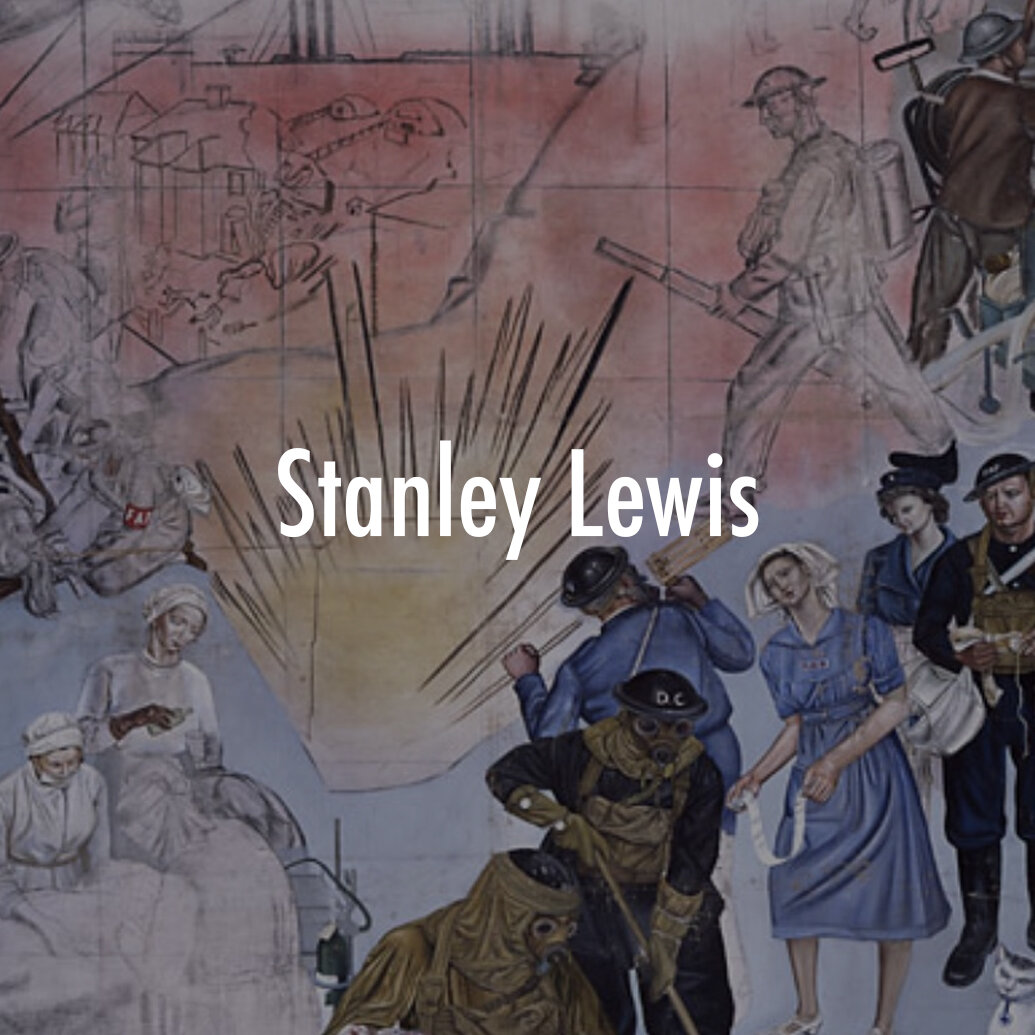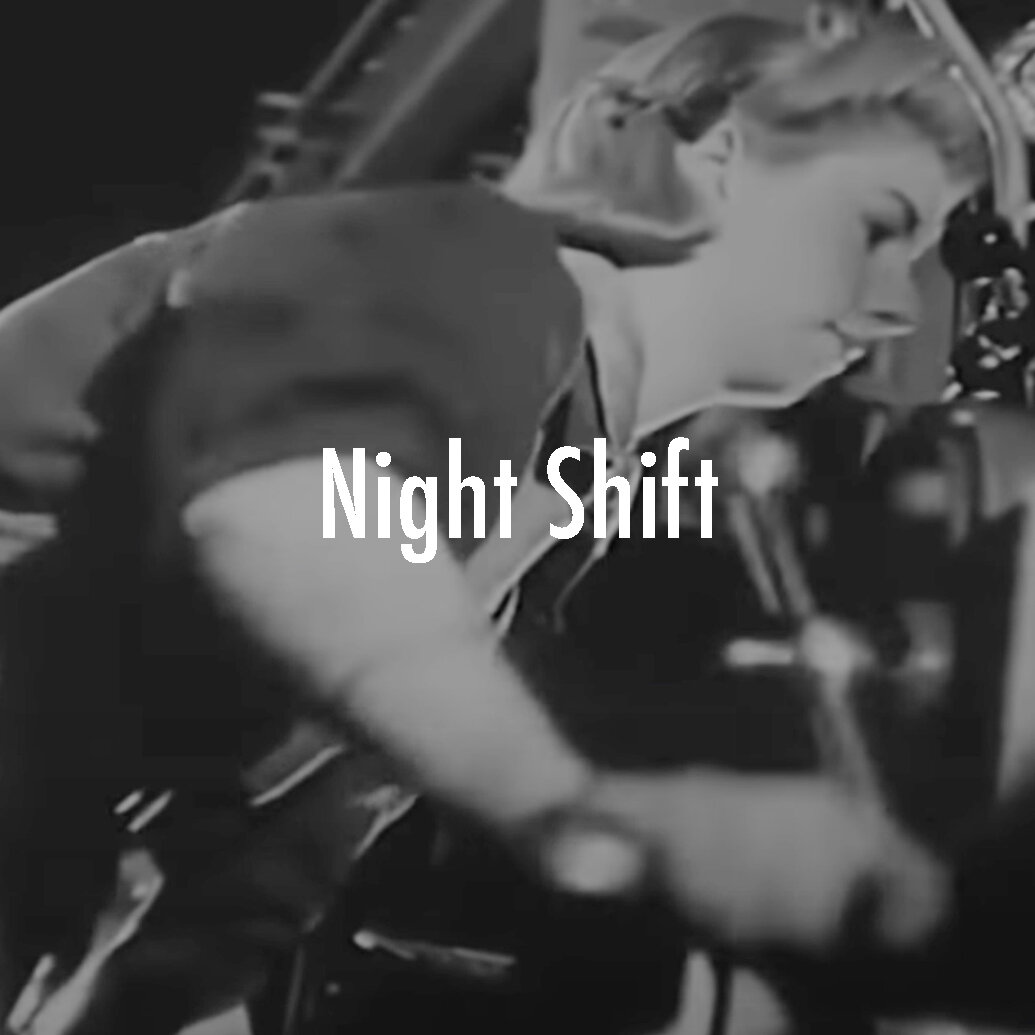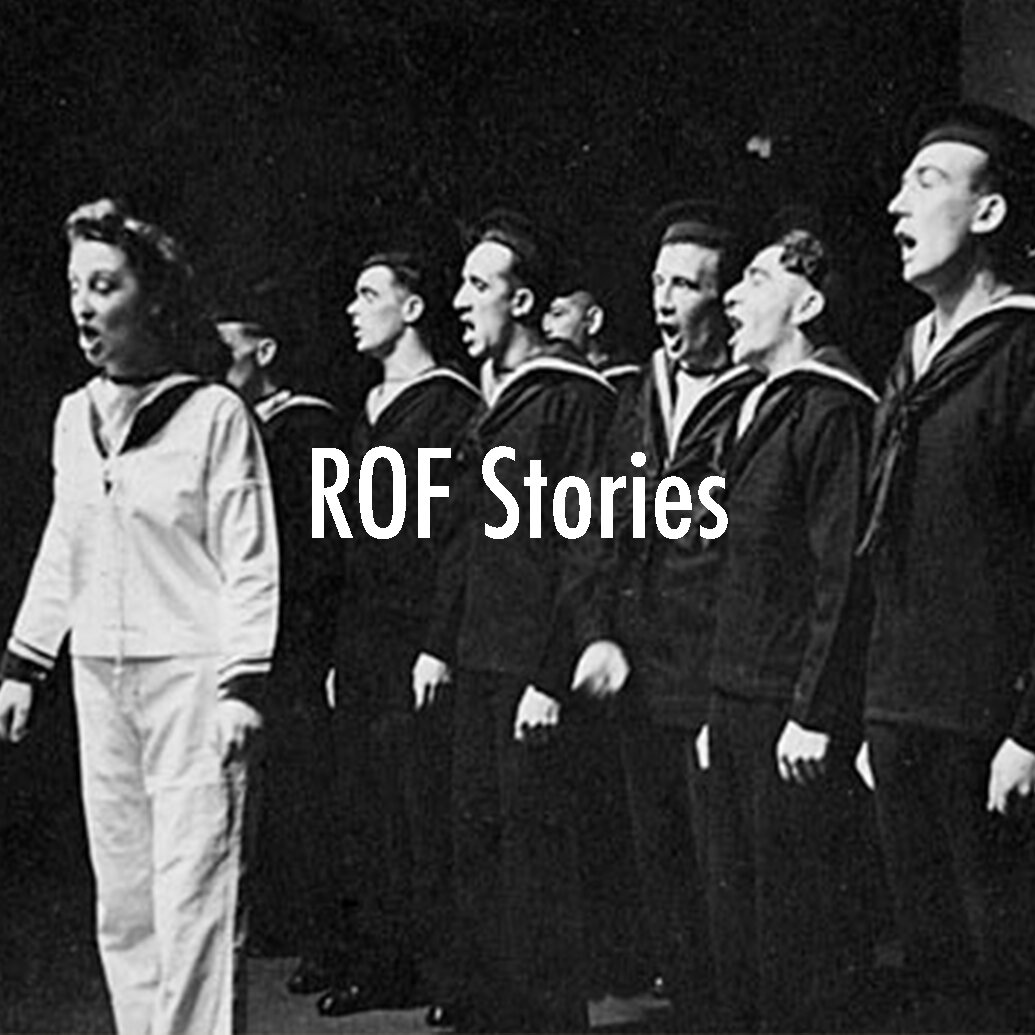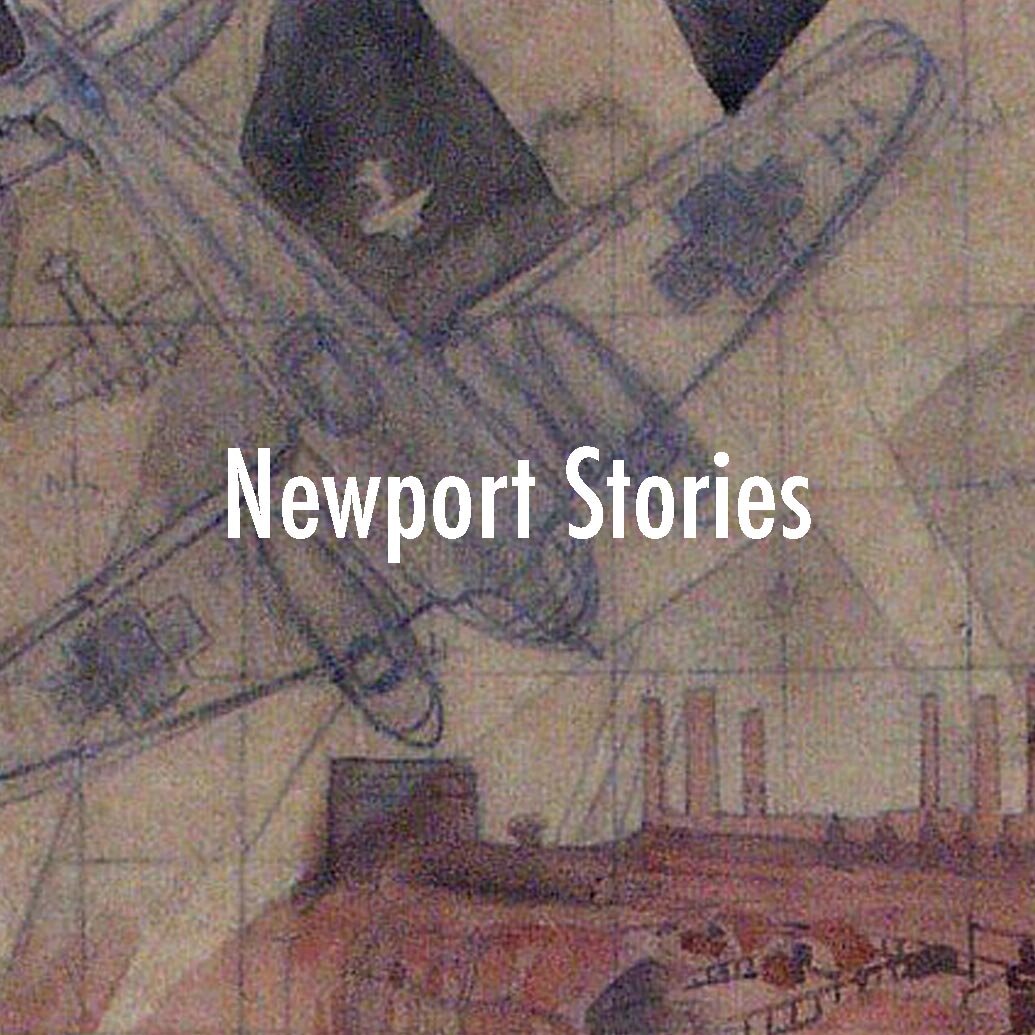Newport Stories:
Ringside Seat
Des Carter was born on 26th December 1929 and lived at 127 Gaer Park Drive, Newport until 1950 when he left to do his National Service in the Army. His parents then moved from the Gaer to Maindee, where they ran The Globe pub. Living at the Gaer as a child, he had a bird's eye view of the war's effects on Newport.
This is his story.
The Gaer
"I was born in 1929 and lived at the Gaer, which was built in 1930. The rent was 17/6 per week. That was 1/- a week extra for the view which from the back, you could see all the Bristol Channel from Avonmouth and Bristol to Minehead and Penarth, as well as Newport Docks, railways, Ebbw Junction where my father worked as a driver on the Great Western Railway, Maesglas etc.
I knew the area well and as a child, I must have walked over most of the fields haymaking on the Gaer Farm, milking the cows etc.
A good two-mile walk each way
I went to the Gaer School until 1940. In January 1940 I went to St Woolos on Stow Hill for a year and a half and then to Stow Hill Central for two years. It was a good two-mile walk each way. There were air raid shelters built along the way and big water tanks in place. Then I went over to Newport Technical College. There were no buses to the Gaer at the time. The nearest bus went to Jews’ Wood, Risca Road or the Handpost, so if you walked that far, you might as well walk all the way.
War was declared on 3rd September 1939 and straight away we went down to Bassaleg Road at the bottom of the Gaer to watch the convoys of army lorries and guns and Bren gun carriers, with “Next stop Berlin” and “Hanging out the washing on the Siegfried Line” on them, on their way to Forge Lane where they assembled before going to the Docks to go to France. Forge Lane had only just then been built as it is not in the picture and even the wall was camouflaged.
The shelter at the bottom of the garden
We had an air raid shelter at the bottom of the garden with two bunks built into it where we had to sleep when it got a bit busy. We grew veg. and soft fruit and also had an allotment off Bassaleg Road where I helped with my brother and sister, as it was “Dig for Victory”.
There were about fifty barrage balloons all around Newport at that time. We had one at Bassaleg Road by the Cemetery and one next to the Farm which I could see from my house. They pulled them up and down when the weather was bad and if they were not quick enough when it was windy, the cable would snap and the balloon would disappear into the clouds. A flash of lightning would send two or three down in flames, as well.
The bombing begins
My first experience of enemy action was in daylight in 1940. I had left school on Stow Hill at 4.30 and instead of going home, I went down Charles Street to the threepenny and sixpenny store which was Woolworth’s (where Boots is now).
The air raid warning went so we all had to go down into an air raid shelter next door. We could hear the guns going and when the all-clear went, I walked home picking up lots of shrapnel on the way. My brother was home at the time and had a grandstand view of about five German aircraft bombing the Docks but they seemed to miss the ships just creating water splashes.
After that, it was only night bombing. We would have to sleep in the air raid shelter for weeks on end as they were mostly attacking Bristol and Avonmouth. We could see the big red glows of the fires between the flashes and the searchlights and hear the noise of the planes over head all the time.
Cardiff was the next place to be hit hard on a couple of big nights, although a lot of decoy fires were lit from the Lighthouse to past Peterstone and a lot of bombs were dropped on the moor, although they did drop flares on parachutes which the guns tried to hit down.
There were big guns at Goldcliff, Dyffryn, Peterstone, Belmont and High Cross. Rogerstone had lots of smoke screens on all the roads with the blackout covering the Northern aluminium factory with decoy fires built in the woods above Forge Lane.
The young air raid warden
At the weekends I helped at the air raid wardens’ post at Melfort Road, manning the big sand-bagged garage and I ran messages from there to the ARP post at Fields Road, just the other side of Jews’ Wood.
One night a German bomber was directly overhead when I was in my own air raid shelter. He dropped a very noisy stick of bombs which crashed down on Ridgeway and Fields Road where a lot were killed and injured, so later I was taken over with the wardens to help in some salvaging in the houses wearing my own steel helmet.
On another night I was in bed when my mother called me to go to the window as she had just seen a German bomber fly past and crash on Stow Park Avenue. It had caught a barrage balloon cable and crashed on a house and we could see the flames.
The next morning on the way to school, we stopped at the barrier and were picking up small bits of plane to go with our collection of shrapnel and pieces of bomb. Some of the shrapnel I had picked up was stuck in the ice on a frozen lake at Gwent College (a private school) nearby. We had hard winters in those days.
From where I lived, you could see the Docks and the railway sidings. In all the blackout, you could see the lights on when they were working so when you saw the lights go down low, you knew that the Germans were not very far away. When they went out completely on a master switch, that’s when the air raid warning siren went.
"Jerry's about!"
One night my father was at home and I was in bed. He had seen the lights go out and said, “Down the air raid shelter! Jerry’s about!” I was first down and put the light on in the living room just in time to see the heavy blackout curtains billow in as the windows shattered. It was the first of eight parachute mines that were dropped on Newport and it had landed in the field above Park Junction signal box.
I went down there first thing and there was not a tile or window left on the box. The hedge next to the huge crater had nearly disappeared and draped around were lots of remnants of bits of green cords and parachute, which I picked up for my collection plus large pieces of aluminium. There were lots of people killed in Newport from the other mines.
Early in the war where I lived the army came and knocked a hole in the wall at the top of the Drive which had completely enclosed the Gaer Fort. This wall had been built by Lord Tredegar to keep his deer in and only had one gate entrance which was at the bottom of Bassaleg Road.
The army used to come up there towing their big guns and to do their training. They camped over there and the Home Guard used it all the time. The army had three huts built under the trees for their ammunition and practised throwing phosphorus bombs at the wall.
Indian regiment at Bassaleg
I had joined the army cadets and I camped there as well. Early on there was an Indian regiment stationed at Bassaleg and they came up there on a big open day, demonstrating their skills on their horses with their lances sticking tent pegs, and I remember getting the autograph of Raymond Glendenning (the BBC commentator), who opened it.
In the war my mother, who worked for the navy, sometimes helped her sister who kept the Waterloo Hotel at the entrance to the Dock Gates. I often climbed up into the hotel tower (which is not there now) with the pigeons.
I stayed down at the Hotel a couple of times when they had a special party for some ship’s crew, before they were quite often sunk.
My mother’s sister kept chickens at the back of the Hotel and I used to help her feed them. I even had a fresh hen’s egg for breakfast, which was lovely as we only had dried eggs during the war.
The Americans arrive
When the Americans started to arrive at Newport Docks, I knew when five or six trains were booked to take them off the Docks to go as far as Bassaleg before they changed engines and went on to the rest of the country. We would sit on the railway bank and watch them passing while they threw us chewing gum and sweets. Later they were billeted in our schools and church halls etc.
They crammed all their lorries, guns and tanks on Forge Lane and all the lanes around Tredegar House. They used to give us lifts on their jeeps down the Lighthouse Road and let us climb on tanks.
When I was going to school at Newport Technical College in 1944, we used to pass the big piles of sandbags on the middle of Newport Bridge and talk to the Americans manning the anti-aircraft guns on them, as it was the only main bridge into south Wales.
D-Day, 5th June 1944
One day I got up at seven o’clock, turned the radio on (which we did all the time) to hear the announcer saying that German radio was saying that parachutes and dummy parachutes had landed in Normandy. I looked out of my window and Newport Docks, which had been crowded with ships of all sorts from small aircraft carriers to ships of all sizes, some flying their own barrage balloons, was empty. They had all sailed and had landed on the Normandy beaches on the second day.
P.S. I used to go a lot in the lunchtime from school to the Reading Room and Museum in Dock Street to read the papers during the war. The Museum than had an Egyptian mummy, a dinosaur skeleton, and a huge golden eagle with a white hare in its talons and lots of Percy Laybourne's stuffed birds and eggs."
- Des Carter, April 2005
